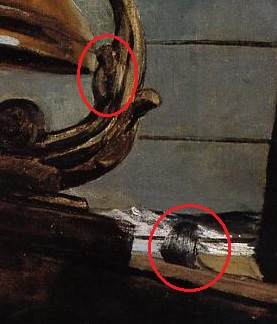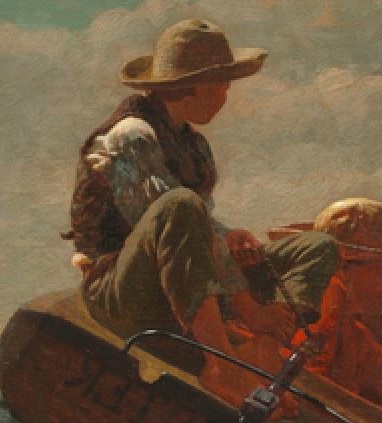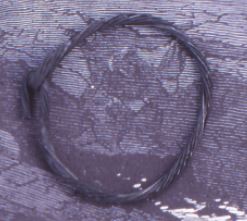
detail - doctor with white coat & boy with hat seated on ground
In the upper marking, I see a doctor in a white coat. In the lower marking, I see a boy sitting on the ground wearing a hat and perhaps chewing on a piece of grass. Both images support the idea that all's well. If the images are too large, or you are too close, you may not see these. If you do not see them, they may need to be smaller or you may need to be further away. Note: In the late 19th Century it became a standard for doctors to wear white coats.
Support regarding Homer's intention comes from the context, for there is a motive for placing these two items in the painting that we can understand. Both images together support the general theme that all is well. The doctor, by himself, could just as easily suggest that someone is sick, but combined with the seated boy they work as a whole. The doctor image raises the sick/well question, but the seated boy provides the answer regarding health. A boy seated on the ground with that pose is not sick, so "all is well" in a medical sense.
This is another example of embodied illusions that function to allude to ideas that support the theme of the painting. When Winslow Homer did this, he was doing what Washington Allston laid out in Lectures on Art.
Two other images are included below.

